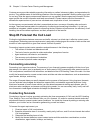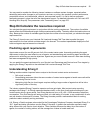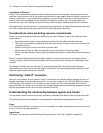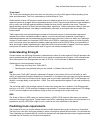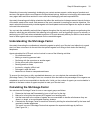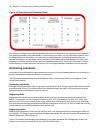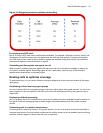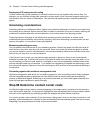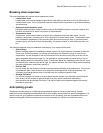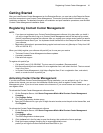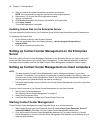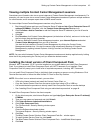36 Chapter 3 Contact Center Planning and Management
Employing ACD enterprise call routing
Contact centers that provide extended, or around-the-clock service, can interflow calls to other sites. For
example, you can interflow mid-day calls received by a busy center in San Francisco to agents working the
late-afternoon shift at a center in Philadelphia. This optimizes call handling without scheduling additional
agents.
Scheduling considerations
Scheduling should be a collaborative effort. Agents have schedule preferences, and want to know when they
are working well in advance. Agents are more likely to adhere to schedules if they are involved in defining the
conditions of schedule adherence and non-adherence, and in other areas of the planning process.
Producing long-term schedules is less efficient than producing monthly schedules, as contact center
conditions and agent availability are continually changing. Short-term scheduling is more accurate, but less
popular with agents. It is important to find a good balance.
Measuring scheduling accuracy
You can measure the effectiveness of your scheduling process. Create a line graph of the Service Level for
each half-hour interval for each day over the past week. Draw a horizontal line across the graph to indicate
your service objective. Look for inconsistencies in the service provided for different time intervals across days,
and how far you stray from your service objective.
If the Service Level is erratic, you may have enough resources in place, but they may not be consistently
available to handle calls. If the Service Level is inconsistent at certain time intervals across the week, or you
are not meeting your Service Level objective, investigate to see if you are adequately staffed at these times
and are making the best use of resources. Try to assess how consistently the agents are responding to real-
time information displays. Determine if they are restricting non-ACD activities to slow periods and adhering to
the schedule.
Scheduling agents with workforce management tools
Workforce management tools assist you in scheduling agents for work and holiday periods. Many packages
offer an integrated forecasting component that uses historical data to partially automate the scheduling
process for established agents. Scheduling is not entirely automated: you must tweak agent schedules and
enter shift and agent variables for agents manually.
Step #6 Determine contact center costs
An effective budget conveys what is currently happening in the contact center, projections for the upcoming
year, and business objectives. It is important to highlight the trade-offs between the service provided to callers
and costs to the organization by developing at least two budgets that reflect different scenarios.
You need to provide a clear indication of how the money is being spent, what you are doing to reduce or curb
spending, and what equipment is required to meet service objectives and expected growth over the next year.
Budgeting is on-going process that needs continuous refinement.



